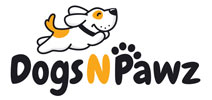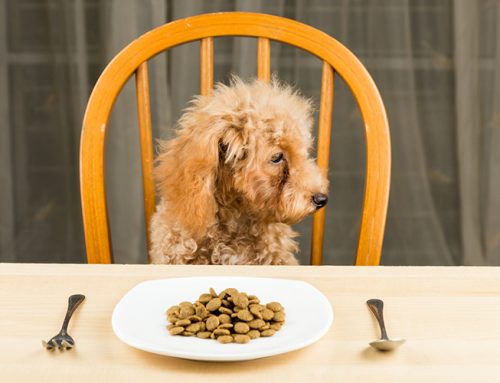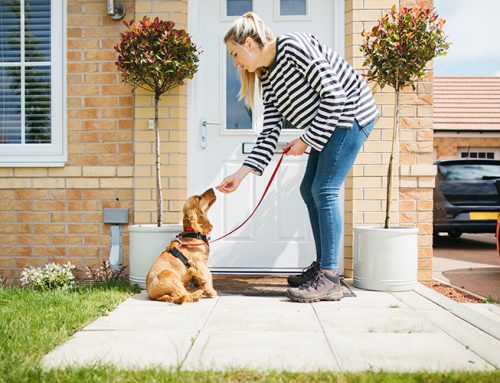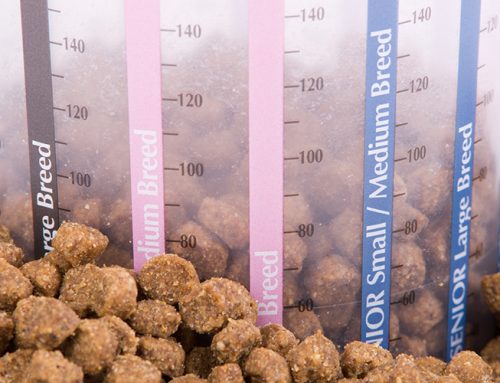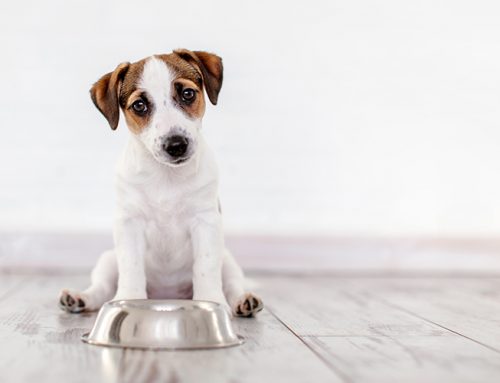Maybe your dog is a little chunky. It wouldn’t be unusual. In 2018, the New York Times ran an article by Susan Janks titled, simply, “Our Fat Pets.”
Emphasis on our.
“In 2018, an estimated … 56% of dogs in the United States were overweight or obese,” according to the Association for Pet Obesity Prevention (APOP), a non profit organization founded in 2005 by a veterinarian named Ernie Ward.
Estimates suggest there are almost 90 million dogs in the United States — which means there are roughly 50 million overweight dogs. It is a collective problem, as the New York Times article suggests. It’s one that doesn’t always seem that important: after all, fat dogs can be, well, cute. It’s easy for dog owners to overlook a little bit of pudge.
But it’s not all cute and fun.
“Obesity shortens a dog’s life span and makes them more likely to develop disease,” write veterinarians Krista Williams and Robin Downing, for VCA Animal Hospital’s website. “It was always accepted that heavy dogs lived a shorter lifespan than lean dogs, usually by 6-12 months. But a large, lifetime study of Labrador Retrievers has found that being even moderately overweight can reduce a dog’s life expectancy by nearly two years compared to their leaner counterparts. This is a sobering statistic.”
For pet parents, it’s certainly alarming.
Obese dogs are at higher risk for (among other illnesses):
“Obesity is the number one health threat pets face, and the most important pet health decision owners make each day is what and how much they feed,” Ward says on the APOP website.
Dogs are considered overweight if they weigh 10 to 20 percent above their ideal body weight, and obese when they weigh 20 percent or more above their ideal body weight. Overweight dogs will have excess body fat on their necks, limbs and backbone, and a round tummy. They won’t have a discernible slope upwards from the stomach to the back legs, and their stomach may sit below their chest.
What causes weight gain in dogs?
Dogs can gain weight for the same reasons people do: diet, lack of exercise, and medical conditions.
“Dogs that are overfed as well as those that lack the ability to exercise or have a tendency to retain weight are the most at risk for becoming obese,” writes verterinarian Natalie Stilwell for PetMD.
Genetics can play a role too.
“The breeds more inclined to be obese include American cocker spaniels, basset hounds, beagles, Cairn terriers, Cavalier King Charles spaniels, dachshunds, Labrador retrievers, Norwegian elkhounds, rough collies, and Shetland sheepdogs,” according to Fetch by WebMD.
Another risk factor for weight gain is spaying or neutering. A dog’s caloric energy requirements go down after these procedures and their serving size should be adjusted accordingly.
What should I do first to help my dog lose weight?
Before embarking on a weight loss plan for your dog, it’s important to rule out any medical conditions that may be causing weight gain in the first place.
Cushing’s disease and hypothyroidism can cause weight gains in dogs. Weight gain won’t be the only symptom, however. Cushing’s for example, also usually comes with symptoms like excessive thirst and hunger, and hair loss. Symptoms of hypothyroidism include lethargy, weakness, hair loss, weakness and infection.
Visit your vet. A vet can also help plan a safe weight loss plan for your dog. Dogs still need high-quality and balanced nutrients, even if they’re on a diet. You can’t simply starve your dog until the weight comes off. That approach is unhealthy for dogs (and people) and a gradual approach will reap the most rewards.
Your dog didn’t get overweight overnight, and it won’t slim down overnight either.

Overweight dogs need a food adjustment
You may need to consider product, portion size and schedule. It’s not as straightforward as calories in, calories out, although that simple equation is a factor.
“It is not appropriate to simply reduce the volume of their current food,” write Williams and Downing in their VCA article, Obesity in Dogs. “This will cause malnourishment over time.”
There are companies that formulate products specifically for weight loss. These foods still need to be complete and balanced, and if they claim to be lower in fat, for example, those claims need to be substantiated with a Guaranteed Analysis (which means the food has been tested and in fact is lower in fat than regular dog food).
Williams and Downing recommend a food with lower overall calorie density.
“Weight loss food for dogs that are rich in dietary protein and fiber but low in fat are typically recommended, since dietary protein stimulates metabolism and energy expenditure,” Stillwell suggests in Obesity in Dogs: Symptoms, Causes and What to Do About It.
Protein helps your dog feel fuller, longer, and foods with dietary fiber can help your dog feel like it had a big meal — without a lot of extra calories.
Consider a few alterations to your dog’s normal diet:
- More protein, fewer carbs (even carbs from non-grains like sweet potato).
- Get the right fats: Omega-3 fatty acids from fish oil add about 40 calories per teaspoon, but offer health benefits, especially for dogs with joint issues.
If you’ve been in the habit of eye balling your dog’s portion, start measuring every meal so that you know exactly how much your dog is eating. This way, you can easily incrementally decrease the portion size if you need to.
What about treats?
Some dogs need rewards for training. Many pet owners have challenging behaviors they are working on preventing with their dogs (like leash lunging), and rewards are a critical part of reinforcing good behavior.
Treats should never be more than 10 percent of a dog’s daily caloric intake.
If your dog is overweight, treats should only be offered for training or good listening — never for being adorable, no matter how cute your dog is being.
Avoid high fat treats, and try fresh veggies. Air popped popcorn is also a low cal option and lots of dogs love popcorn.
There are also treats on the market that are only around a calorie each, so if your dog needs a lot of training and positive reinforcement, look for something like this.
Change up your dog’s meal schedule
You can try feeding your dog smaller meals more frequently. It might trick him or her into thinking she’s getting as much food as before, and it might prevent your dog from getting too hungry if it’s getting fewer calories than it’s used to.
You can also try putting food in a food dispensing toy or puzzle so your dog is more engaged with what it’s eating rather than how much it’s eating.
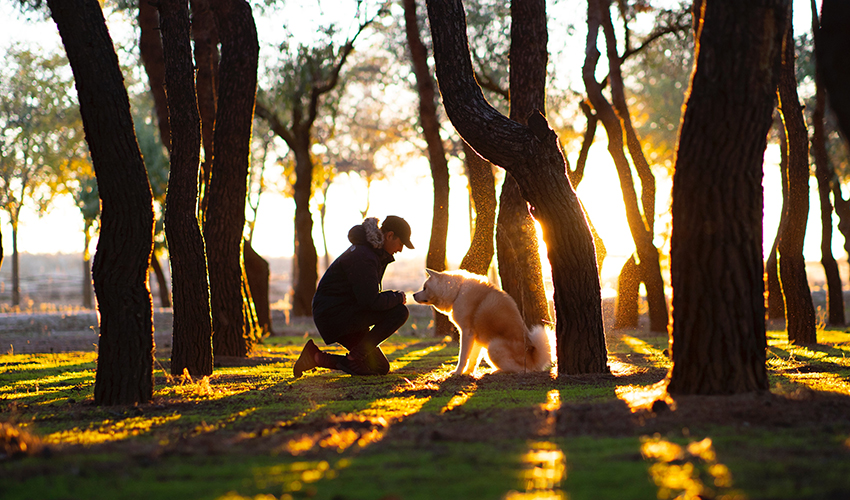
Get out there and walk
Exercise benefits the body and mind. You can’t go from none to run though.
Chances are, if your dog is overweight it’s suffering from some extra pressure on its joints. Start slow and small. Your vet may have some recommendations on how you can get your pooch moving again, especially if it has been sedentary for a prolonged period. You also want to make sure your dog doesn’t have any issues like arthritis that may impact the types of exercise it should be doing.
Depending on the breed of your dog, you should be trying for between 20 and 60 minutes of exercise per day. Start small — a slow walk around the block — and gradually increase the duration and exertion as your dog slims down and gains fitness.
Other great forms of exercise for your dog? Swimming. Tug with a rope toy. Training come/stay. Playtime with other dogs. Playtime with humans. Roughhousing with dogs and people. Learning a new trick like spin or twist. Fetch.
How do I keep track of my dog’s weight loss?
Weigh your dog every two weeks so you can keep track of their downward spiral. If you’re worried you’ll forget between weight check-ins, write it down.
Talk to your vet about the body condition score that they use to assess a dog’s weight, and make sure you understand it too. It can be a handy visual tool to see how your dog is progressing, and help you identify when your dog has reached its ideal weight.
